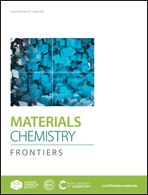A novel quaternized carbon dot–papain complex for the double-target anti-biofilm activity and visualization-ratio fluorescence dual-mode detection of H2O2†
Abstract
Since biofilm infections could cause chronic diseases and drug resistance, posing a serious threat to human health, the development of antibiofilm nanomaterials has attracted the interest of researchers. In this study, a quaternized carbon dot–papain complex (qCD–P) was prepared, and the complex exhibited inhibiting and eliminating abilities against internal resident bacteria and external matrix biofilms, with a minimum inhibitory concentration against Staphylococcus aureus biofilms at 20 μg mL−1. The morphology, particle size, surface potential, and groups of the prepared qCD–P were characterized through multiple characterization means, and the target and antibiofilm mechanisms were explored from the perspective of its two components qCDs and papain. Meanwhile, based on the optical properties of qCDs and catalytic properties of papain, a dual-channel detection platform (naked-eye visualization and ratio fluorescence) of hydrogen peroxide has been realized with o-phenylenediamine as the substrate. The multifunctional qCD–P would provide a foundation for research on the potential applications of nanomaterials for in-clinic treatment and biochemical detection.



 Please wait while we load your content...
Please wait while we load your content...